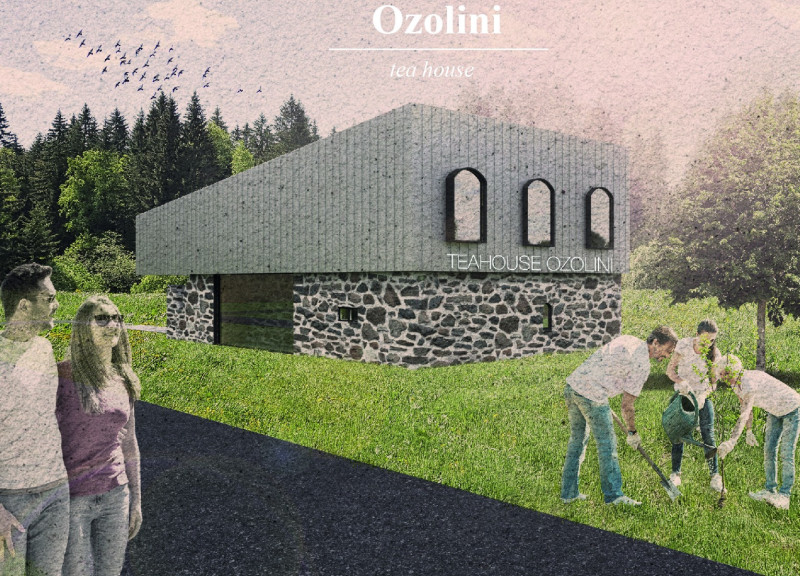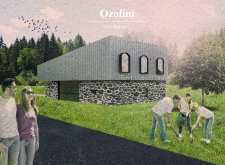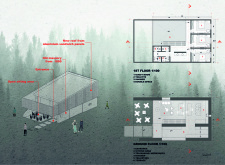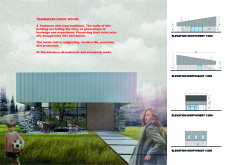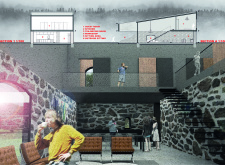5 key facts about this project
Teahouse Ozolini is a unique space that blends history with modern design. Located in a region known for its tea culture, the teahouse serves as a community gathering spot for tea enthusiasts and curious visitors alike. The overall design brings together elements of the past and present, creating an inviting environment for relaxation and social interaction.
Materials
Old masonry from 1850 is an essential part of the structure, connecting it deeply to its historical roots. This material helps tell the story of the teahouse, giving it a sense of authenticity that resonates with visitors. The preserved walls remind everyone of the long history of tea-making traditions in the area, enriching the experience.
In contrast, the roof is made from aluminum sandwich panels. These modern materials provide vital support while also being energy efficient. The panels are lightweight, making installation easier and faster. Their insulating properties contribute to a comfortable environment inside. This blend of traditional and contemporary materials speaks to careful planning and respect for both the past and present.
The layout of Teahouse Ozolini encourages interaction and community engagement. The ground floor features a welcoming entrance and a spacious sitting area, along with dedicated spaces for tea-making workshops, a kitchen, and a tea-drying area. Each of these areas is arranged to facilitate social gatherings, reflecting the teahouse’s purpose as a place for cultural exchange. A terrace offers an opportunity to enjoy tea outdoors, enhancing the overall experience.
On the first floor, guests find a room, toilet, shower, and double space. This thoughtful arrangement ensures visitors have essential comforts during their stay. It contributes to a welcoming atmosphere, making the teahouse more than just a place to enjoy tea; it becomes a home away from home for many.
The blending of historical and modern features creates a cohesive overall appearance. Each exterior wall showcases the connection between the old masonry and the new roof. The design details, such as the placement of windows, allow light to flow in and connect the inside with the surroundings. Teahouse Ozolini successfully balances the past and the present, creating a space where culture and community thrive.


